Rishton
Rishton
Rishton (or sometimes Rishtan) is well-known from its handmade ceramic tradition that dates back far far in history. Rishton is located in the southern part of Uzbek Fergana valley, just north of the Kyrgyz border, in the midway between Fergana and Kokand and is therefore a nice place to stop when driving between the earlier mentioned larger cities. The Rishton town itself has a population of more than 50 thousand people but has a small town feeling due to the traditional small housing. Rishton has also a lot of old mausoleums and interesting medieval sights to explore.
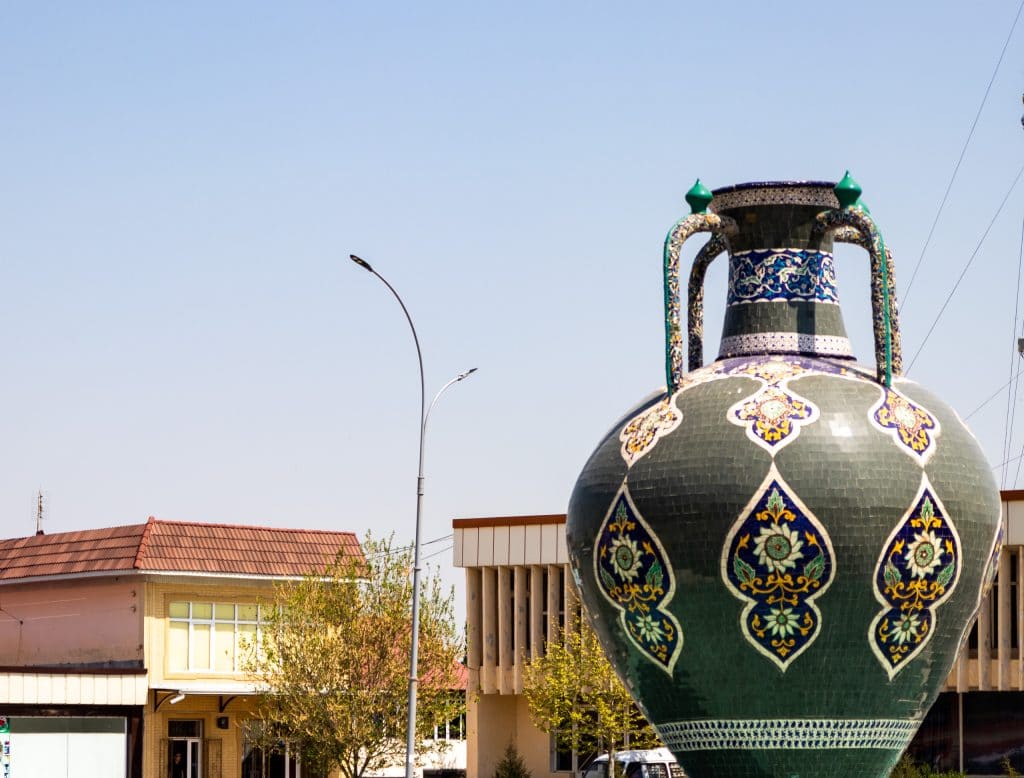
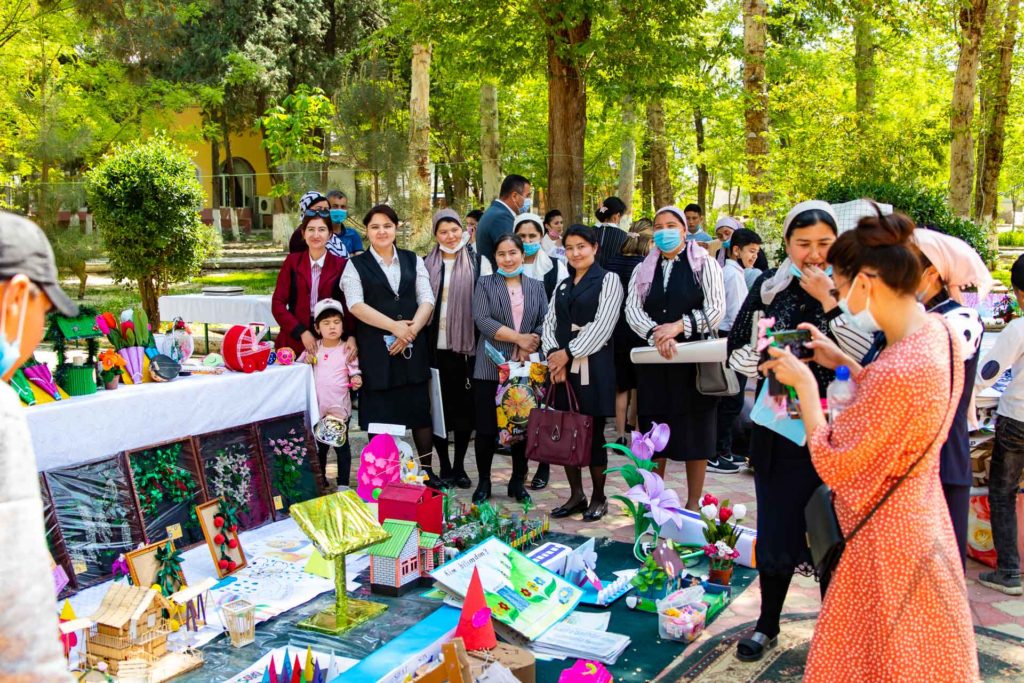
Allegedly, about 90% of the ceramics you see in Uzbekistan (and of the same style ones abroad) originate from Rishton area. One of the reasons that Rishtan has become a pottery and ceramics center is that they have abundant amounts of good reddish clay that they extract from the area for the production of ceramics.
Rishton ceramic is popular especially for the traditional gorgeous design where blue, turquoise and ultramarine colors dominate. During the Soviet period, factories were opened for mass production but following the Independence, Rishton masters returned to the original way of production in their workshops. Rishtan is part of some of our Uzbekistan Tours and also some of our Central Asia Tours.
Tours including Rishton
Rishton Sights & Activities
The Shrine of Khoja Rushnoi
The shrine of Khodja Rishnoi is located next to the Ceramic Center. During the construction of the Ceramic Center, the mausoleum of Khoja Rushnoi was also restored.
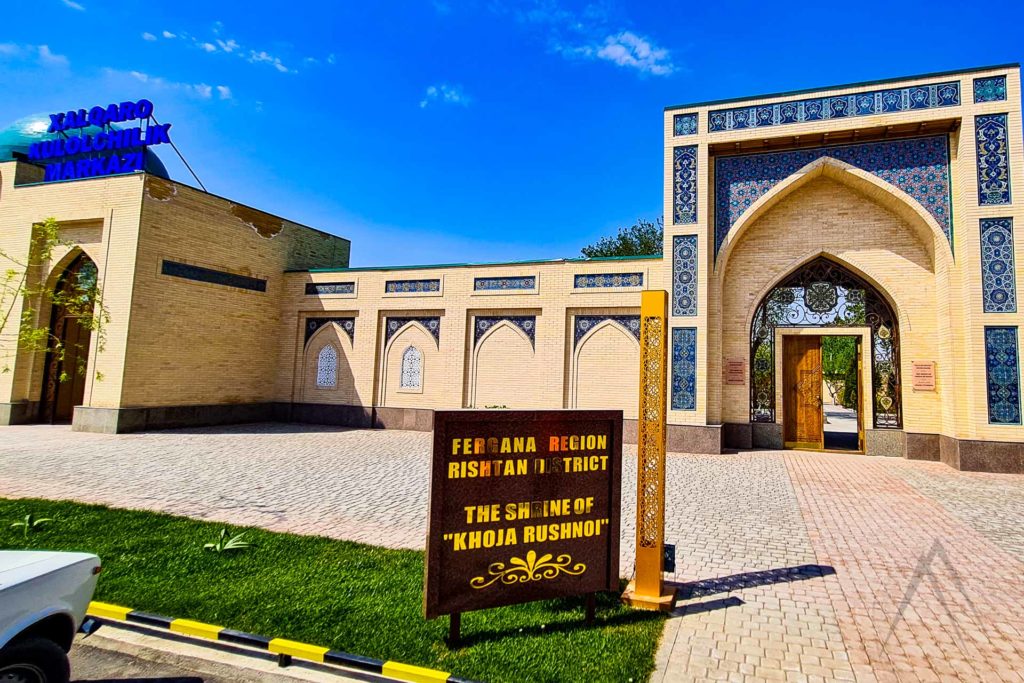

Rishton Ceramic centers
The largest and most modern of the ceramics centers in Rishton is the International Ceramic Center that was opened in January 2021 to accommodate shops and workshops of the local masters. The center contains 20 two-storey houses, a museum of Rishtan history and a banking services center.
Workshops and shops are located on the first floors of the houses, and families of craftsmen live on the second floors. There are also hotels in the houses that can accommodate 6 people. Here visitors can settle and get acquainted with the work of potters. Furthermore, private workshops in the area that in our opinion are more authentic and nice places to visit.
Rishton international ceramic center has a touristic feel to it with all the new facades and glass doors and it reminds somewhat of an outdoor shopping center focused on ceramics. To get the full experience of Rishtan it is better to have a local guide. Contact us and we will organize it for your visit!
Khoja Ilgir Mosque and Mausoleum
Rishtan hasn’t preserved many historical monuments intact but there are ruins of many places and they are under restoration. One of the places restored is the 19th-century Khodja Ilgor’s mosque and mausoleum. The complex is divided into three parts: a modern mosque at the very entrance behind a garden that was built at the end of the 19th century and later operated as a school. The second par opens though tiny doors and with cemeteries along the way, a unique shaped mausoleum of Burhan al-Din Al-Marghinani appears. The last part is an underground mausoleum with a place to sit down and enjoy the serenity and cool underground air. There is an old caretaker gladly telling more about the place but only in Russian or Uzbek. The complex is located just next to the Kyrgyz border crossing point and you can even see the Kyrgyz side from inside the complex.
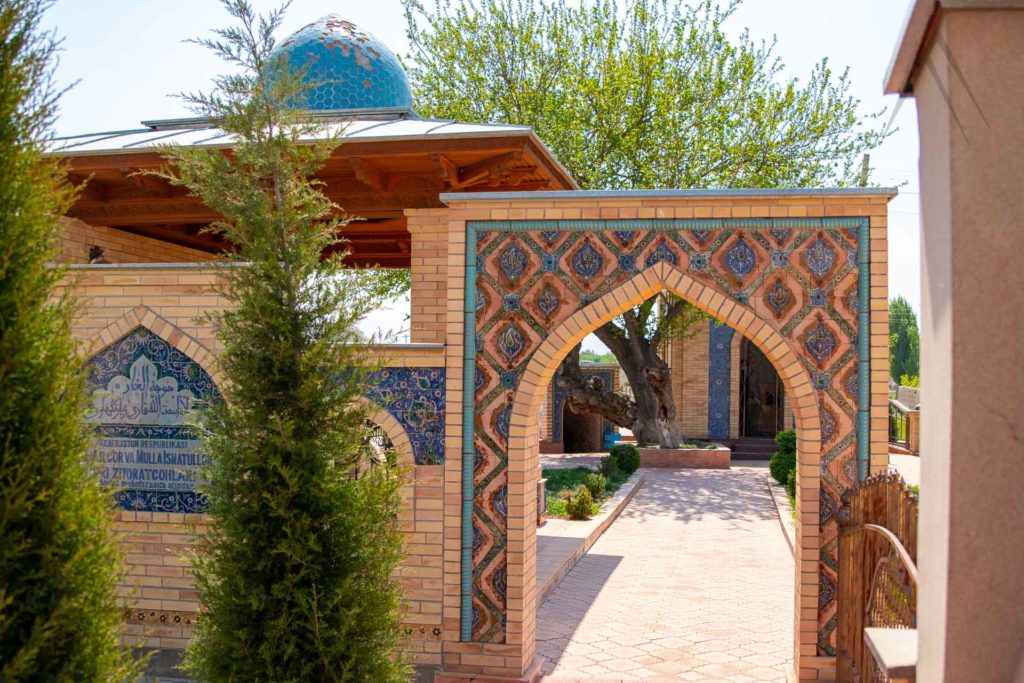
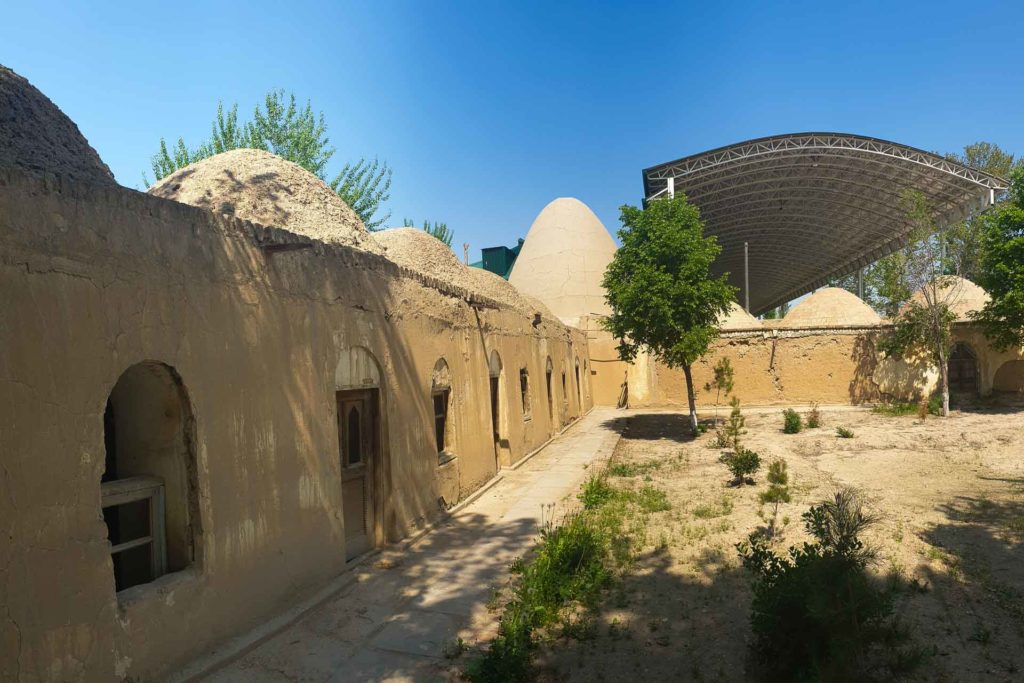
Unique Tomb of Burhan al-Din al-Marghinani
One of the unique places to visit in Rishton is the peculiar shaped mausoleum which has no analogues in Central Asia. There is no accurate information about the history of the shape.
This unique tomb or mausoleum resembles a Saka’s cap at the least present form. Mausoleum’s appearance is perhaps from swollen clay ruins: there is a story telling that these are the remains of a Zoroastrian temple from the 9th century (although an ancient origin, but then there is much more in common with the Buddhist stupa form).
According to another source, it is Burhan al-Din al-Marghinani’s tomb, who was one of the most known Islamic scholars and the author of Hidaye (Al-Hidayah).
Burhan al-Din al-Marghinan was born in Rishtan and grew up in Margilan. He is honored today for his significant work on Islamic law called Al-Hidayah. It is a book that later developed into the basis of Anglo-Muhammadan law in colonial India. Among the common people, he was more known as Sohibi Hidaya and was buried in Samarkand, but after independence Uzbekistan, he also got a mausoleum in Rishton.


Other mausoleums in Rishton
According to the local authorities, there are more than 100 ancient sights in Rishton area. As said, most of them are in ruins but some have been restored. There is yet very little information available on the places and they mostly have no descriptions or guides present to tell about the places. In order to learn more about the rich history of Rishtan it is best to have a local guide taking you around the town.
Mausoleum

Al Roshidoni Mausoleum

The wool carpet workshop
Due to the close location of Rishtan to Kyrgyzstan border, there has been a lot of Kyrgyz families living on the Uzbek side already before the Soviet border insertion. There is a one Kyrgyz community living on the southern part of Rishtan that produces hand made sheep wool carpets. The family there will be glad to receive you and show their production facilities and of course to sell you some of their nice woolly, colorful carpets.
Rishton Park
As is common in the post Soviet small towns, there is also a central park in Rishton. The park is in good condition and it is a good place to have shelter from the heat of the mid day sun. There are also some ceramics production workshops nearby the park.
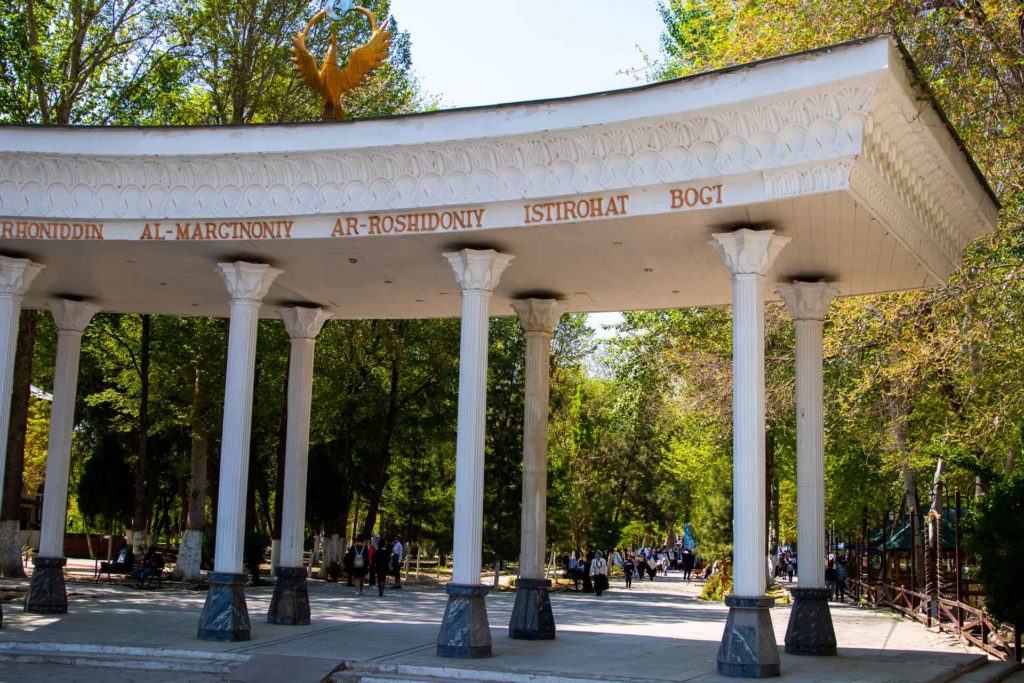
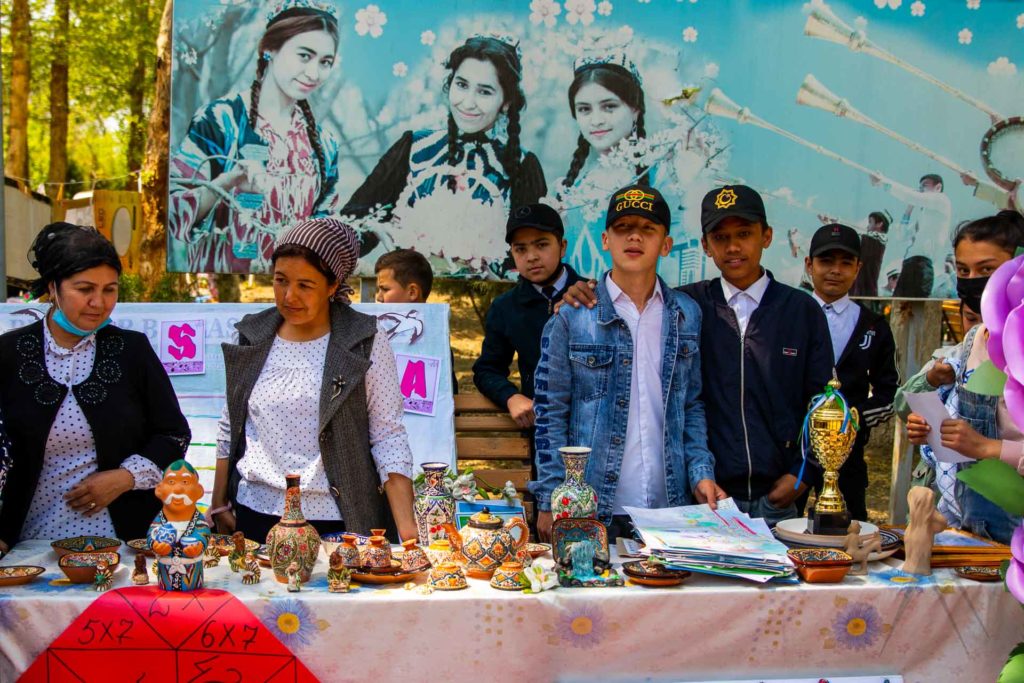
Around Rishtan
Sary Korgon Ancient settlement
While visiting Rishton and conversing with the locals they pointed out that there are several Medieval or older fortress ruins nearby Rishton. Locals were also eager to show their treasures and we had the chance to explore a completely unexcavated fortress with abundant amounts of pottery with different colors. Some of the old walls are still very much intact and it is possible to explore the insides of the fortress through some very dark and dusty tunnels.
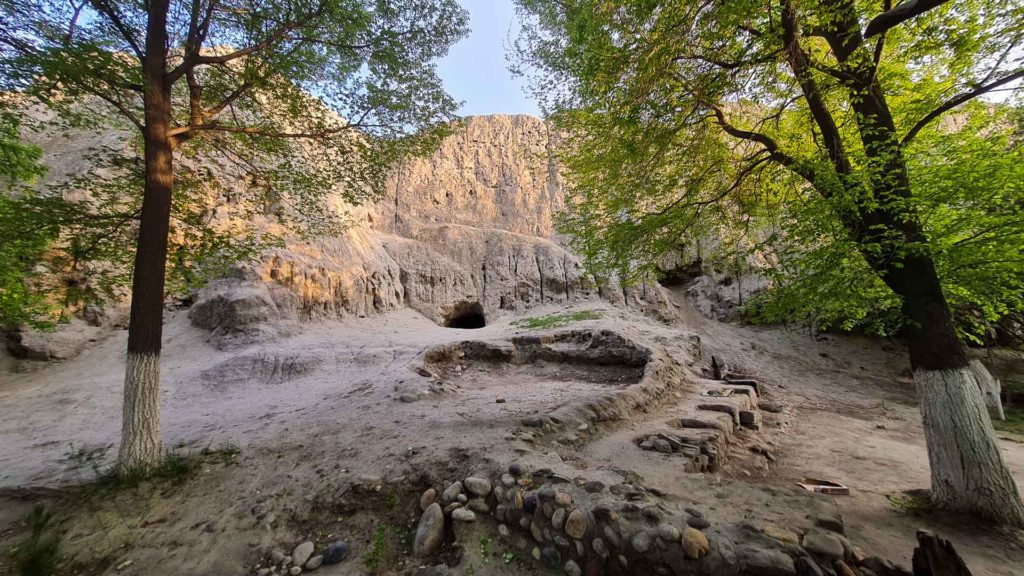

Destinations & Sights Near Rishton
Page updated 8.5.2021